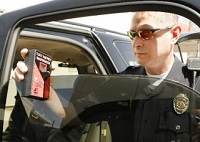Window Tinting Laws
 When it comes to driving, no one wants to be stopped by an officer of the law for any reason, especially for window film
that is too dark. In the United States, window tinting laws were put in action for your safety, your fellow motorist's safety
and the safety of law enforcement. It is to your benefit to read a little information I have provided for you about the
State of Arizona’s window tinting laws. This information is a brief over view of how the State of Arizona currently regulates
window tinting, this information could be valuable and of assistance to help you avoid any problems for your auto window tint.
When it comes to driving, no one wants to be stopped by an officer of the law for any reason, especially for window film
that is too dark. In the United States, window tinting laws were put in action for your safety, your fellow motorist's safety
and the safety of law enforcement. It is to your benefit to read a little information I have provided for you about the
State of Arizona’s window tinting laws. This information is a brief over view of how the State of Arizona currently regulates
window tinting, this information could be valuable and of assistance to help you avoid any problems for your auto window tint.
The first thing you should know about window tinting laws is that each state has its own predetermined set of restrictions. If you plan on traveling across the U.S. it would be in your best interest to know the state laws for window tinting where you live as well as the other states you plan on traveling to or through.
State of Arizona Window Tinting Regulations
 All Arizona Department of Public Safety, Arizona Highway Patrol, Phoenix Police Road Rage and Phoenix, Mesa, and Glendale
Police officers carry an electronic meter used to measure the window tint on the front doors of motor vehicles. If an officer
suspects that your window tint is too dark he can now pull you over and test your front door tint with the electronic meter.
It is considered a primary violation. In Arizona there are no restrictions for window tinting darkness on the back window,
back doors or back quarters as long as you have a mirror on both sides of your vehicle. This means as long as you
have a mirror on both front doors of your car you could legally paint the back windows black. The main window tinting
restrictions for Arizona are the front doors and the front windshield. The front windshield restrictions in Arizona are to
the AS1 Line which is usually marked into the glass on the windshield. It is prohibited to tint the whole front windshield.
All Arizona Department of Public Safety, Arizona Highway Patrol, Phoenix Police Road Rage and Phoenix, Mesa, and Glendale
Police officers carry an electronic meter used to measure the window tint on the front doors of motor vehicles. If an officer
suspects that your window tint is too dark he can now pull you over and test your front door tint with the electronic meter.
It is considered a primary violation. In Arizona there are no restrictions for window tinting darkness on the back window,
back doors or back quarters as long as you have a mirror on both sides of your vehicle. This means as long as you
have a mirror on both front doors of your car you could legally paint the back windows black. The main window tinting
restrictions for Arizona are the front doors and the front windshield. The front windshield restrictions in Arizona are to
the AS1 Line which is usually marked into the glass on the windshield. It is prohibited to tint the whole front windshield.
Window tinting darkness is measured in units of VLT (Visible Light Transmission). That is the percentage of light that the film allows to pass through the windows. The State of Arizona’s front door VLT Law is 33% with a tolerance of 3%. The meter used by officers to measure the window film has an accuracy tolerance ratio of + or - 2%. With the 3% leeway the state gives and the + or – 2% accuracy tolerance ratio of the measuring meter combined you could be legal if your front door window film measures at 28%. Many States have different restrictions on allowable VLT levels and these states have different VLT restrictions for each window (Please see National Window Tinting Chart). A good example is the state of California. The restrictions are similar to Arizona when it comes to the two front door mirror requirement so you can go as dark as you want on the back glass and the back door glass. However, the restrictions for the front doors in California are 70% VLT which is comparable to NO WINDOW TINT.
Window Tint Colors
While this will not affect most of you, it is important to note that some colors are prohibited for window tinting. The primary reason for this is to avoid driver confusion between civil and law enforcement vehicles. That is why often times states prohibit colors such as blue, yellow and red from window tinting.Reflectivity Standards for Window Tinting
All states have reflectivity standards on automotive window tint. This is to make sure there are no mirror surfaces on windows to potentially cause hazardous situations such as blinding reflections from the sun. This is referred to as luminance reflectance. Some states have restrictions on any reflectivity. The reflectivity restriction for Arizona is 35% with a tolerance of 3%. This is something most people will not need to worry about unless you are looking for an extremely reflective, "looks like a mirror" film.Film Identification/Certification
In some states it is a requirement that all auto tint installed be certified by the state. Some states have policies requiring a sticker designating legal film to be placed on designated areas of the vehicle. This is not a requirement in Arizona.Medical Exemptions
In Arizona medical exemptions are available for those with an official doctor's note. The Arizona Department of Motor Vehicles Medical Exemptions are for patients who need additional protection from UV light for melanoma, heat protection or visual light sensitivity. If you think you may qualify for a medical tinting exemption contact your physician, the Department of Motor Vehicles and your local law enforcement. Windshield tinting is another area in which medical exemptions may sometimes be granted.If Arizona is your permanent place of residency it could be very valuable to take some time and familiarize yourself with the Arizona window tinting laws. Take a few minutes of your time so you know that you’ll avoid potential traffic tickets and fines. If you are not sure about something, always double-check with your local law enforcement and the Arizona Department of Motor Vehicles.
Happy Motoring!




